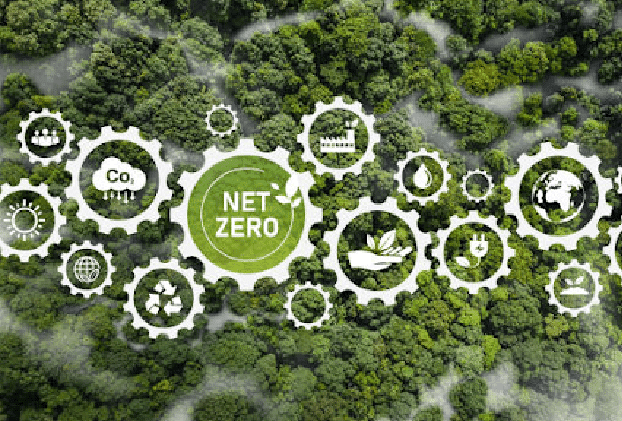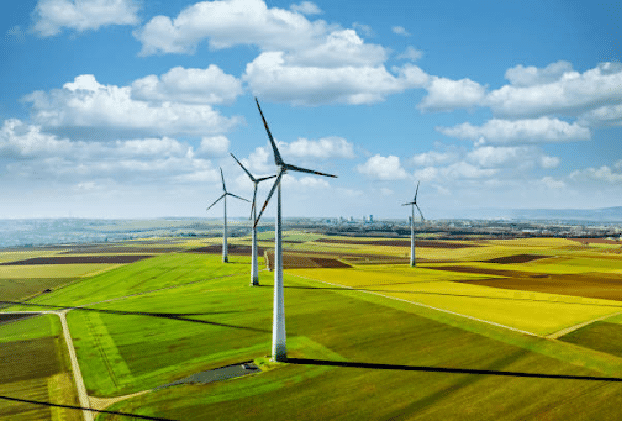Singapore’s Path to a Sustainable Future: The Promise of Net Zero

In an age where environmental challenges dominate the global agenda, countries worldwide are embracing new strategies to combat climate change and ensure a sustainable future. Among the leaders in this movement is Singapore, a city-state that has set its sights on a bold and ambitious goal—achieving net zero emissions by 2050. This is not just a lofty aspiration but a carefully crafted strategy to transform the way the nation approaches energy consumption, industry practices, and even its very urban infrastructure. What does this goal mean for Singapore, and why is it so crucial for the nation’s future?
At its core, net zero refers to the balance between the amount of greenhouse gases emitted into the atmosphere and the amount removed from it. For a country like Singapore, where land space is limited, and its economy is heavily reliant on industries such as manufacturing, logistics, and energy, this may seem like an overwhelming challenge. However, Singapore net zero is exactly these challenges that fuel Singapore’s commitment to innovation and transformation.
The nation’s pledge to reach net zero by 2050 is not merely an environmental stance but a multifaceted initiative that blends sustainability with economic growth. The shift toward net zero in Singapore comes with the promise of cleaner air, reduced energy costs, job creation, and the preservation of the nation’s natural resources. This transformation promises to not only safeguard Singapore’s environment but also to place the country at the forefront of green innovation, offering businesses new opportunities and citizens a higher quality of life.
Perhaps one of the most profound benefits of this commitment is the emphasis on creating a green economy. In the years leading up to 2050, Singapore plans to transition its industries to greener practices, reducing the carbon footprint of everything from power generation to transportation. This means embracing technologies such as renewable energy, energy storage solutions, and electric vehicles. But the shift doesn’t stop there—there’s a concerted effort to foster research and development in cutting-edge fields like carbon capture and storage, low-carbon materials, and sustainable construction.
By building a green economy, Singapore opens doors to new industries and job opportunities, creating a more resilient workforce for the future. As businesses adopt cleaner practices and renewable energy sources, they will need a skilled labor force to support these endeavors, creating demand for professionals in fields such as renewable energy engineering, environmental science, and sustainability consultancy. In fact, the green economy could prove to be a catalyst for growth, helping to diversify Singapore’s economy and reduce its dependence on traditional industries.
Beyond economic benefits, one of the most tangible advantages of a net zero approach is the improvement in the quality of life for Singapore’s residents. As the city-state works to cut down on emissions and promote sustainable practices, the air quality is expected to improve, leading to healthier living conditions for its population. In addition, sustainable urban planning is at the heart of this initiative, with green spaces, energy-efficient buildings, and innovative public transport systems designed to reduce congestion and pollution. This vision includes a future where residents enjoy clean air, a bustling green urban environment, and a thriving, eco-conscious community.
The net zero journey is also a vital step in ensuring the nation’s resilience against the unpredictable forces of climate change. With its low-lying geography and exposure to rising sea levels, Singapore faces distinct environmental vulnerabilities. By prioritizing net zero emissions, the country not only works toward reducing its carbon impact but also fortifies its ability to combat climate-related challenges. From enhanced flood protection to energy-efficient infrastructure, every facet of the net zero plan is designed to build a sustainable future where Singapore can thrive despite the uncertainties of climate change.
Moreover, the government of Singapore has actively sought to involve citizens and businesses in the journey toward a more sustainable future. Public engagement and collaboration are central to the nation’s strategy. From offering financial incentives for businesses that adopt green technologies to encouraging individuals to reduce their carbon footprints, the country’s approach to achieving net zero is one of collective action. This encourages a sense of shared responsibility where every individual, company, and organization plays a role in Singapore’s environmental transformation.
A significant part of Singapore’s net zero initiative also involves the country’s push for greater energy efficiency. Today, the nation is already one of the world’s leaders in sustainable urban development, and the ambition is to continue pushing the envelope in energy management. This involves everything from incorporating smart technologies in buildings to optimize energy consumption to expanding the nation’s energy grid to integrate more renewable sources such as solar power. Singapore’s solar energy capacity has been growing at a remarkable rate, with the government making significant investments to increase the use of this clean, renewable source of energy. Solar panels are now a common feature of buildings across the island, and efforts are underway to develop solar farms on rooftops and offshore facilities.
Singapore’s focus on sustainability extends to its transport sector as well. As part of its net zero commitment, the country is heavily investing in the development of electric vehicle (EV) infrastructure and sustainable public transport systems. The goal is to reduce the carbon emissions associated with transportation, a key contributor to the nation’s overall emissions. EV adoption is expected to surge, supported by incentives and a robust network of charging stations, while improvements to public transport infrastructure—such as the expansion of rail lines and the introduction of cleaner buses—will make it easier for residents to reduce their reliance on private vehicles.
Singapore’s commitment to achieving net zero is a reflection of its proactive stance in the face of global challenges. In a world where the effects of climate change are becoming more apparent by the day, this ambition offers hope and inspiration. It sets a precedent for other nations to follow, proving that even the most densely populated and resource-limited countries can chart a path toward sustainability. By embracing innovation, investing in green technologies, and creating a circular economy, Singapore has the potential to lead the way toward a future where environmental stewardship and economic growth go hand in hand.

Looking ahead, the road to net zero will undoubtedly present challenges, but Singapore’s track record of innovation, determination, and forward-thinking leadership provides a solid foundation. As the nation pushes forward, it’s not just aiming to reduce emissions but to transform its entire way of life—fostering a more sustainable, equitable, and resilient society. Through this commitment, Singapore is not only taking responsibility for its own future but also contributing to the global effort to create a better world for generations to come.
With each step taken toward net zero, Singapore is not merely keeping pace with global environmental trends—it’s setting the pace. A green economy, sustainable cities, and a thriving populace are within reach, and Singapore’s leadership in this arena is a testament to what can be achieved when ambition and innovation are paired with action. The nation’s journey to net zero is a promise to its people, its future, and the planet itself.



